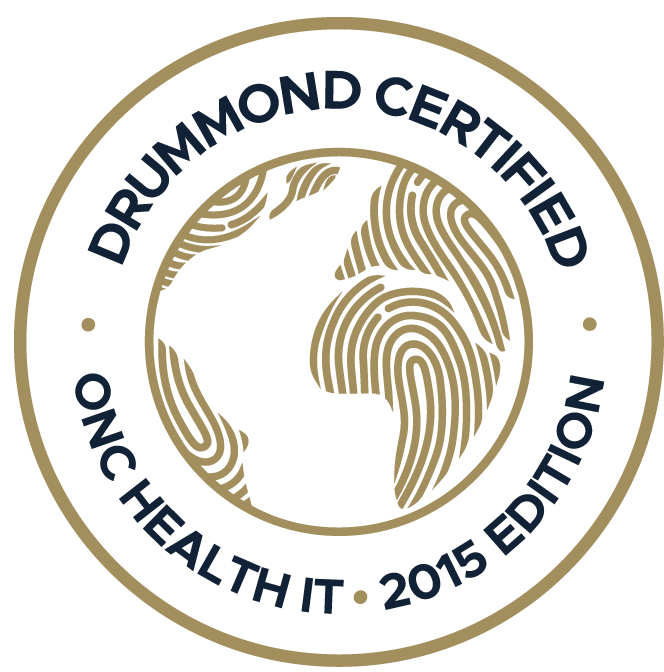ACA enhanced subsidies may expire at the end of December. And that uncertainty is already shaping patient decisions this open enrollment season. Many will switch plans, some may drop coverage, and medical practices need...
Have you ever wondered how much telehealth has changed healthcare? Before COVID-19, only 35% of U.S. physicians had tried telehealth services. However, during the height of the pandemic, 43% of doctors conducted more than half of their patient visits through telehealth. What’s interesting is that 43% expect to use telehealth for 10 to 49 percent of their appointments.
Moreover, in early 2021, telemedicine saw a remarkable investment of $4.2 billion, making it the leading category in healthcare funding in the U.S. So, it’s accurate to say that telehealth platforms and services have revolutionized patient care by improving accessibility and efficiency.
By integrating advanced EHR software like PracticeEHR, healthcare providers can deliver comprehensive care remotely. In this blog, we will explore the key role telehealth plays in modern healthcare and how it continues to shape the future of medical practice.

Breaking Down Geographical Barriers
Telehealth is breaking down geographical barriers in healthcare and making it possible for patients in remote areas to access quality medical services. Imagine a patient living in a rural town with limited access to specialized healthcare. Telehealth platforms, like Practice EHR, allow them to connect with specialists from urban centers without needing long-distance travel.
For example, a patient with a chronic condition like diabetes can have regular check-ups and consultations with an endocrinologist via telehealth services. This saves time and travel costs and ensures that the patient receives continuous and consistent care. Through virtual visits, healthcare providers can closely monitor the patient's condition and make necessary real-time adjustments to their treatment plans.
Telehealth services also benefit elderly patients who may find traveling to a clinic or hospital challenging. By leveraging telehealth technology, these patients can receive the care they need from the comfort of their homes. This approach significantly reduces the risk of missed appointments and improves overall patient outcomes. With telehealth, geographical barriers are no longer an obstacle to receiving quality healthcare.
Transforming Patient Convenience with Telehealth Platforms
Telehealth platforms are transforming patient convenience, making healthcare more accessible and user-friendly. So, imagine a busy professional struggling to find time for medical appointments. With telehealth, they can schedule virtual visits that fit into their hectic schedule and eliminate the need to take time off work or visit a clinic.
For example, a parent with a sick child can use telehealth services to consult with a pediatrician without leaving home. This saves time and reduces the stress and hassle of traveling with a sick child. During the virtual visit, the pediatrician can assess the child's symptoms, provide a diagnosis, and even prescribe medication, all through the telehealth platform integrated with all-in-one EHR software like PracticeEHR.
Telehealth also benefits patients with mobility issues or chronic conditions that make frequent travel challenging. These patients can have regular check-ups and follow-ups from the comfort of their homes, which means they can receive consistent care without the physical strain of traveling.
Seamless EHR Software Integration for Better Outcomes
Seamless integration of EHR software with telehealth platforms improves patient outcomes and practice efficiency. Imagine a cardiologist conducting a virtual check-up with a heart patient. Integrated EHR software allows the cardiologist to instantly access the patient’s complete medical history, lab results, and previous visit notes, providing a comprehensive view of the patient’s health during the consultation.
For example, if a patient has been prescribed multiple medications, the doctor can review all current prescriptions in real-time. This integration reduces the chances of errors and helps the doctor make informed decisions quickly. The doctor can also update the patient’s records immediately, ensuring all information is up-to-date and accessible for future visits.
Additionally, seamless EHR integration facilitates administrative tasks. After the consultation, the billing process is automated, reducing the workload on administrative staff and minimizing the risk of errors. Patients can also access their visit summaries, lab results, and follow-up instructions through the patient portal, which improves their engagement and understanding of their health.
Cutting Healthcare Costs Efficiently
A major benefit of telehealth services is cutting healthcare costs. For example, a rural patient with a chronic condition might need regular check-ups. Traditionally, this patient would need to cover travel expenses and miss work hours, resulting in additional costs. Telehealth platforms eliminate the need for travel, allowing patients to attend appointments from their homes and significantly reducing these out-of-pocket expenses.
Additionally, telehealth reduces the overhead costs for healthcare providers. With fewer in-person visits, clinics can save on operational expenses such as utilities, staff overtime, and the maintenance of physical facilities. For example, a busy pediatric clinic might see fewer sick visits during flu season by offering virtual consultations for minor ailments, thus optimizing their in-clinic resources for more critical cases.
Moreover, telehealth services can help prevent costly hospital readmissions by allowing continuous patient monitoring and timely interventions. For instance, a diabetic patient can have regular virtual consultations to manage their condition effectively, reducing the likelihood of complications that could lead to hospitalization. This proactive approach improves patient care and leads to significant cost savings for both patients and healthcare providers.
Revolutionizing Chronic Disease Management
Consider a patient with diabetes who requires constant monitoring and frequent adjustments to their treatment plan. Telehealth platforms allow the patient to have regular virtual check-ins with their healthcare provider, guaranteeing timely modifications to their care regimen without frequent clinic visits.
This continuous monitoring allows healthcare providers to detect potential issues early and intervene promptly. For example, a patient with hypertension can use a telehealth platform to upload their daily blood pressure readings. The healthcare provider can review this data in real time, making necessary adjustments to medications or lifestyle recommendations, thereby preventing complications like strokes or heart attacks.
Moreover, telehealth services empower patients to take a more active role in managing their conditions. Through these platforms, patients can access educational resources, track their progress, and communicate easily with their healthcare team. This engagement improves adherence to treatment plans and overall health outcomes, which makes chronic disease management more effective and personalized.
Maximizing Provider Efficiency
Telehealth services streamline the workflow for healthcare providers by reducing the time spent on administrative tasks. For example, a doctor can conduct follow-up appointments virtually, saving travel time and allowing them to see more patients throughout the day.
Consider a scenario where a healthcare provider uses telehealth platforms for routine check-ups. Instead of patients coming into the office for every visit, many consultations can be conducted online. This approach frees up physical space in the clinic and allows the provider to fit in additional appointments. As a result, both patient wait times and no-show rates decrease significantly.
Additionally, integrating telehealth with specialty-specific EHR software like PracticeEHR improves efficiency by ensuring that all patient information is accessible in one place. During virtual visits, providers can quickly access patient histories, lab results, and treatment plans. This integration minimizes the need for repeated paperwork and enhances the accuracy of patient records, which ultimately leads to more effective and efficient care delivery.

TeleVisit From Practice EHR - The Best Telehealth Platform!
TeleVisit from Practice EHR has become one of the best telehealth platforms, revolutionizing modern healthcare by breaking geographical barriers and improving patient convenience. It seamlessly integrates with EHR software, guaranteeing that healthcare providers have all the necessary tools to deliver superior care. By using these telehealth services, providers can offer timely, efficient, and cost-effective care, making healthcare more accessible and manageable for patients with chronic diseases.
What’s more, PracticeEHR's TeleVisit maximizes provider efficiency and significantly cuts healthcare costs by reducing administrative burdens and optimizing workflow. To cut it short, it is a comprehensive solution that addresses the dynamic needs of both patients and healthcare providers. Embrace the future of healthcare with PracticeEHR's TeleVisit and experience the transformative benefits of advanced telehealth technology!
Topics: Patient Care, EHR Solution, Specialty-Specific EHR, digital age, Industry Update, Medical Billing, Medical billing services, RCM, EHR, Technology in Healthcare, Kiosk, TeleVisit, EHR Features, ePrescribing, Telehealth Platforms
RECENT POSTS



TOPICS
- EHR Solution (190)
- EHR (125)
- digital age (118)
- Patient Care (115)
- Medical Billing (111)
- Specialty-Specific EHR (110)
- Industry Update (97)
- Technology in Healthcare (84)
- EHR Features (79)
- Small Practice (76)
- Medical billing services (73)
- Integrated EHR (63)
- HIPAA Security (62)
- RCM (62)
- New Technology (44)
- Cloud-based EHR (43)
- Telemedicine (42)
- Healthcare Office Management (39)
- Practice EHR News (38)
- Kiosk (31)
- Revenue Cycle Management (28)
- AI Solutions (24)
- ePrescribing (21)
- AI Scribing (17)
- Best EHR Software (16)
- EMR (12)
- Practice Management Software (12)
- AI-powered Medical Billing (11)
- Practice Automation (11)
- AI EHR (10)
- Client Favorites (10)
- TeleVisit (10)
- The ONE (10)
- Switching to New EHR (9)
- AI Scribe (8)
- Best EHR Practice (8)
- EHR Integration (8)
- MACRA/MIPS (8)
- Patient Portal (8)
- Urgent Care (8)
- Psychiatry EHR (7)
- AI scanning (6)
- E-Prescribing (6)
- Product Updates (6)
- events (6)
- Automated Health Tools (5)
- MIPS (5)
- Mobile EHR (5)
- Family Medicine EHR (4)
- HIPAA (4)
- Integrated Practice Management (4)
- Internal Medicine EHR (4)
- MIPS Reporting (4)
- Medical Practice Management Software (4)
- Multilingual AI Scribe (4)
- Orthopedics EHR (4)
- Podiatry (4)
- Podiatry EHR (4)
- Regulatory Updates (4)
- Telehealth Platform (4)
- Chiropractic EHR (3)
- Digital Experiences (3)
- EHR Flaws (3)
- EHR Implementation (3)
- EHR for Chiropractors (3)
- EHR for Small Practices (3)
- Eligibility Verification in Medical Billing (3)
- Insider (3)
- Patient Check-in Kiosk (3)
- PracticeEHR GO App (3)
- Telehealth Platforms (3)
- Cash Flow (2)
- Cashless Payments (2)
- Clearinghouse (2)
- Dermatology EHR (2)
- EHR Scheduling (2)
- Family Medicine (2)
- Foot and Ankle Care (2)
- Foot and Ankle EHR (2)
- Health records 101 (2)
- Healthcare Compliance Certification (2)
- Medical Coding Services (2)
- Medical Credentialing (2)
- Pediatrics EHR (2)
- Quality of Patient Care (2)
- Reporting Under MIPS (2)
- Risk and Liability in Medical Settings (2)
- Voice-Activated AI Scribe (2)
- What Works Clearinghouse (2)
- ACA Subsidy (1)
- AI Scan (1)
- AI Scribe for Pediatric Care (1)
- Automated EHR (1)
- Bariatric EHR (1)
- Behavioral Health Practices (1)
- Billing Communication (1)
- Billing for Private Practices (1)
- Cardiology EHR (1)
- Charting (1)
- Data Security (1)
- Dos and Don'ts (1)
- EHR Guides (1)
- EHR KPIs (1)
- EHR Questions to Ask (1)
- EHR Transition (1)
- EHR for Chronic Illness (1)
- EMR vs EHR Difference (1)
- ENT EHR (1)
- Endocrinology EHR (1)
- Gastroenterology (1)
- Gastroenterology EHR (1)
- General Surgery EHR (1)
- Geriatric AI scribe (1)
- Geriatrics EHR (1)
- Guides (1)
- Healthcare Practice Office Management (1)
- Help Center Videos (1)
- Insurance Reimbursement (1)
- KPI (1)
- Key Performance Indicators (1)
- Lab Processing (1)
- MACRA (1)
- Medical Billing Partner (1)
- Nephrology EHR (1)
- Neurology EHR (1)
- Pain Management EHR (1)
- Patient Behavior (1)
- Pediatric Care (1)
- Physical Therapy EHR (1)
- Practice Cash Flow (1)
- Practice Efficiency (1)
- Pulmonology EHR (1)
- Reconsider Your EHR (1)
- Simplify Practice Management (1)
- Staffing in Healthcare (1)
- Switch Medical Billing Providers (1)
- Urgent Care Medical Billing (1)
- Urology EHR (1)
- insurance claim denials (1)








